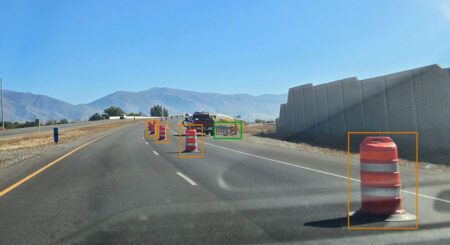The Mayor of London, Sadiq Khan, has confirmed that the UK capital’s Ultra-Low Emission Zone (ULEZ) will be expanded up to the North and South Circular Roads boundary in October 2021.
The new expanded ULEZ will cover an area 18 times larger than the Central London Ultra Low Emission Zone that comes into effect from April 2019, and will affect large numbers of polluting vehicles that do not comply with strict emission standards. It is estimated that 100,000 cars, 35,000 vans and 3,000 lorries might be affected every day by the new expanded zone and tighter standards. The Mayor hopes that the new measures will deliver a major improvement to Londoners health by reducing the toxic air quality that is currently responsible for thousands of premature deaths and other serious conditions. Recent studies by the University of Oxford have shown the health damage from cars and vans costs £6bn (US$8bn) annually to the NHS (National Health Service) and society in general, with the bill from London vehicles alone totaling £650m (US$870m) a year.
Expanding the ULEZ beyond central London and new strict standards for heavy vehicles across the city will result in more than 100,000 Londoners no longer living in areas exceeding legal air quality limits in 2021; a reduction of nearly 80% compared with the scheme without expansion. All areas of London are expected to see reductions in pollution, including on the North and South Circular Roads and only 4% of roads in Outer London are expected to exceed legal limits in 2021. The expanded zone will be managed in the same way as the 2019 central London ULEZ, and will operate on top of the Congestion Charge, 24 hours a day, seven days a week, 365 days a year.
Drivers within the expanded zone using non-compliant vehicles will pay a daily ULEZ charge of £12.50 (US$16.73), 24 hours a day, 365 days a year. These include:
Motorcycles that do not meet Euro 3 standards; Petrol cars and vans that do not meet Euro 4 standards (roughly the equivalent to not being more than 15 years old for cars in 2021); Diesel cars and vans that do not meet Euro 6 standards (the equivalent to not being more than six years old for cars in 2021); Across London diesel buses, coaches and trucks will need to meet the Euro 6 standard. Following an extensive consultation, the Mayor will also tighten the standards for the most polluting heavy vehicles, including buses, coaches and trucks across the whole of London from October 2020, using the same boundary as the existing Low Emission Zone (LEZ).
“London’s toxic air is a public health crisis, and expanding the Ultra-Low Emission Zone is a crucial measure,” said Lilli Matson, TfL’s director of transport strategy. “We estimate that expanding the ULEZ will reduce road transport NOx emissions by a further 28% across London, so this expansion is a huge step toward protecting the health of all Londoners.”




